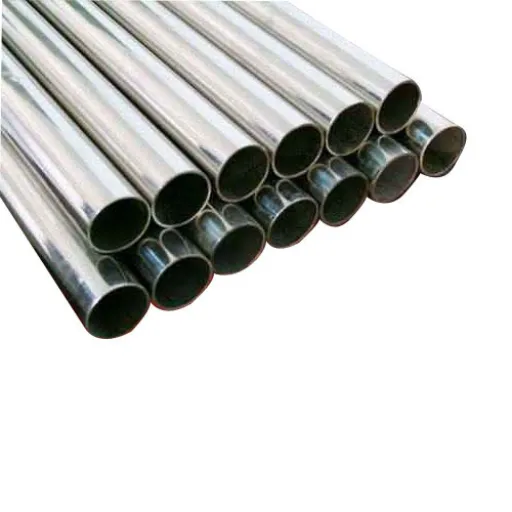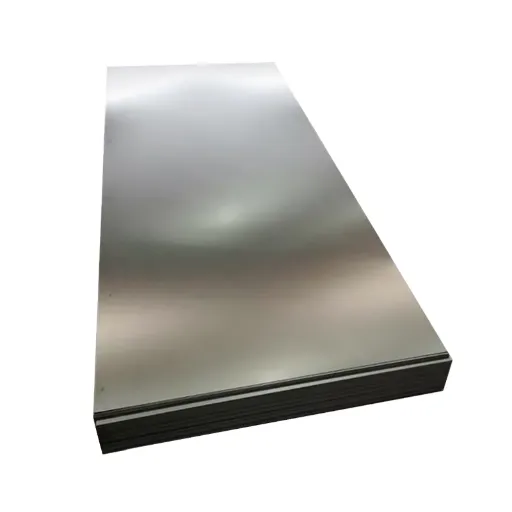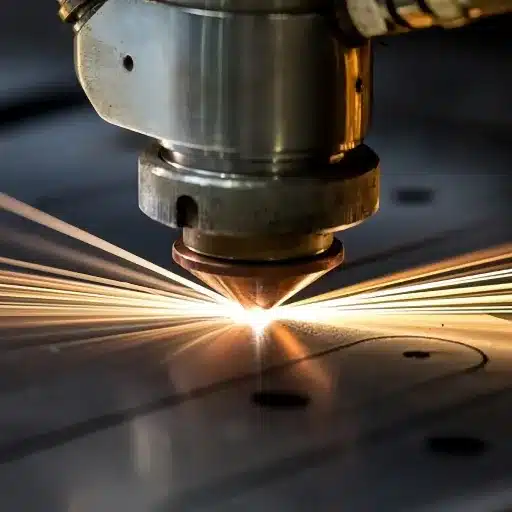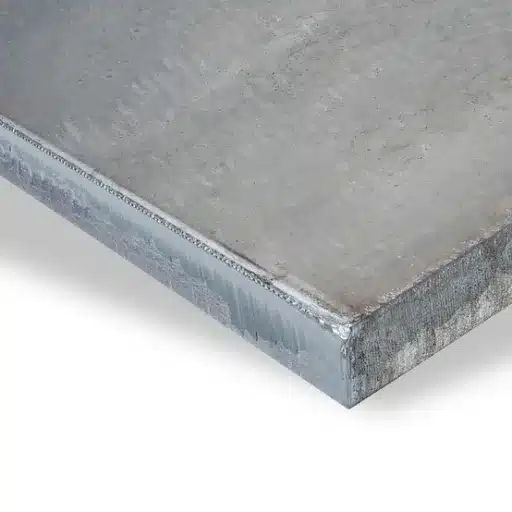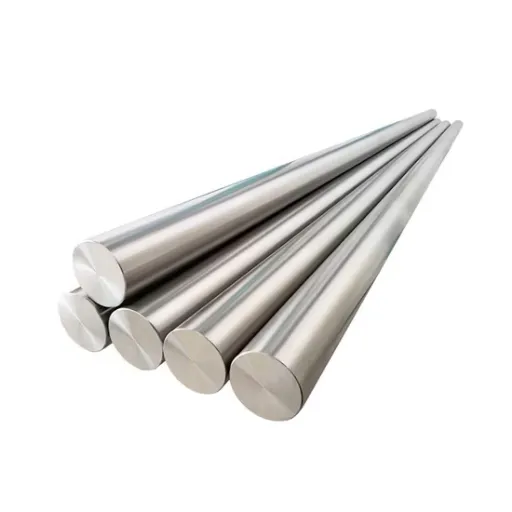Monel alloy is a really flexible and strong material that has been noticed by many industries because of its remarkable features. The main focus of this article is the Monel alloys, their unique characteristics, practical uses, and comparisons with stainless steels, especially Monel 400. No matter if you are an engineer, a builder or just inquisitive about modern materials, this guide will clarify the reasons behind the continuous preference of Monel in hard places. Therefore, come along with us to reveal the alloy’s amazing abilities and the conditions where it truly excels.
Introduction to Monel Metal
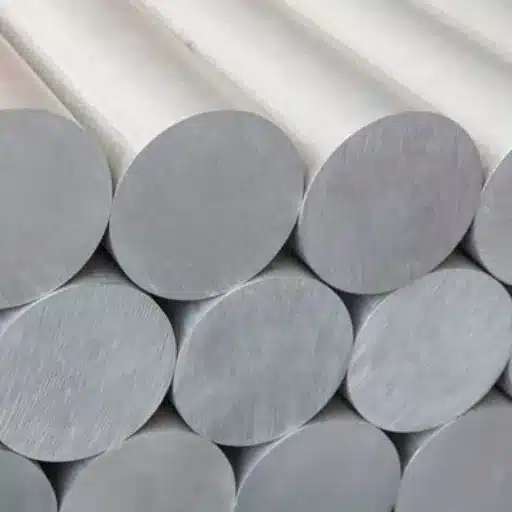
What is Monel Alloy?
Monel is a classification of nickel-containing alloys that contain a higher percentage of nickel (typically 52–67%) and copper, mixed together with minute quantities of iron, manganese, carbon, and silicon. International Nickel Company (INCO) created Monel in the early 1900s, and it was recognized for having tremendous corrosion resistance along with high strength which is the reason for its use in extreme and corrosive areas.
Monel 400 is usually the most common Monel’s variant which is about 63% nickel, 28–34% copper, along with some iron and manganese. The unique property of Monel is its exceptional resistance to saltwater, hydrofluoric and sulfuric acid, as well as to alkaline conditions; thereby non-deteriorating. This property qualifies it for application in marine, chemical, and aerospace industries.
Significance of Monel in Various Industries
Marine Industry
One of the most important and irreplaceable properties of Monel is its resistance to sea water corrosion and thus it becomes a material for manufacturing various marine applications. The use of Monel in the making of ship parts like propeller shafts, seawater pumps, and piping systems is common. Recent reports show that the life of Monel can extend up to 10 times that of regular stainless steel under marine conditions, which equals a reduction in maintenance costs over the same period.
Chemical Processing Industry
The chemical industry requires materials that can stand exposure to very acidic and caustic substances. Monel 400 and Monel K-500 are the most preferred materials for equipment like heat exchangers, reactors, and storage tanks. They resist hydrofluoric acid and sulfuric acid, thus making it safe and reliable over a long period in danger-prone places. Studies suggest that the use of Monel in chemical plants can lead to a 30% reduction in equipment failure rates as compared to other materials.
Aerospace Industry
In aerospace engineering Monel alloys are always in demand because of their ability to withstand severe temperatures and pressures while maintaining structural integrity. Exhaust systems, fuel tanks, and turbine blades are examples of Monel reliance for durability and performance in the industry. Experts claim that the use of Monel alloys in the production of high-performance aerospace components results in an average lifespan increase of 15%.
Chemical Composition and Mechanical Properties
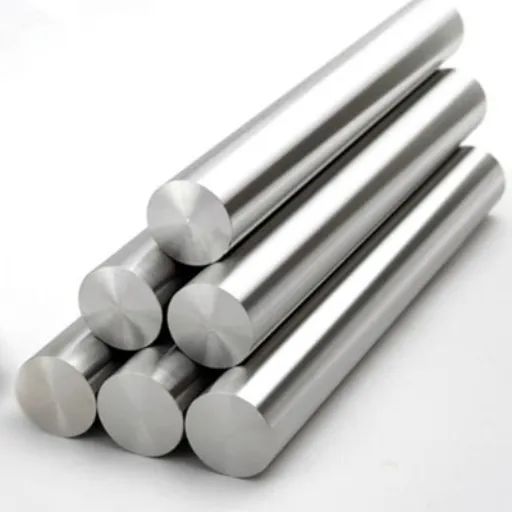
Chemical Composition of Monel 400
Monel 400, a nickel-copper alloy, is highly valued for its exceptional corrosion resistance and good mechanical properties. It is treated with a specific mixture of elements that not only enhance its versatility but also performance in different industrial applications. The following are the standard chemical composition of Monel 400:
| Element | Composition |
|---|---|
| Nickel (Ni) | 63% minimum |
| Copper (Cu) | 28-34% |
| Iron (Fe) | 2.5% maximum |
| Manganese (Mn) | 2.0% maximum |
| Carbon (C) | 0.3% maximum |
| Silicon (Si) | 0.5% maximum |
| Sulfur (S) | 0.024% maximum |
The composition of Monel 400 consisting of nickel and copper provides a very good ability of the metal to resist corrosion in various types of environments like seawater, acids and alkaline(less strong) substances. Moreover, the presence of very small amounts of sulfur and carbon further reinforces its strength and longevity making it suitable for very tough applications like marine engineering, chemical processing and oil and gas industries.
Monel 400’s Physical Properties
The properties of Monel 400 to a large extent overlap with those of the best metals and its great physical qualities so that it can be used in making some very cosmopolitan and high-end products. Here, we have managed to list some of these properties:
| Property | Value |
|---|---|
| Density | 8.80 g/cm³ (0.318 lb/in³) |
| Melting Point | 1300–1350°C (2370–2460°F) |
| Thermal Conductivity | 21.8 W/m·K (at 20°C/68°F) |
| Electrical Resistivity | 0.51 μΩ·m (at 20°C/68°F) |
| Modulus of Elasticity (Tension) | 179 GPa (26 ksi × 10³) |
| Specific Heat Capacity | 0.427 kJ/(kg·K) (at 25°C/77°F) |
Monel 400’s good physical properties along with its great mechanical and corrosion resistance guarantee that it can be a reliable performer even under the most stochastic conditions. Its extreme temperature tolerance both ways (high and low) makes it one of the best materials for use in heat exchangers, pumps, and fasteners in difficult operational environments. Moreover, due to its high thermal and electrical conductivity, it has also been opened up to the electrical and electronic industries such as power distribution and control.
Applications of Monel in Different Sectors
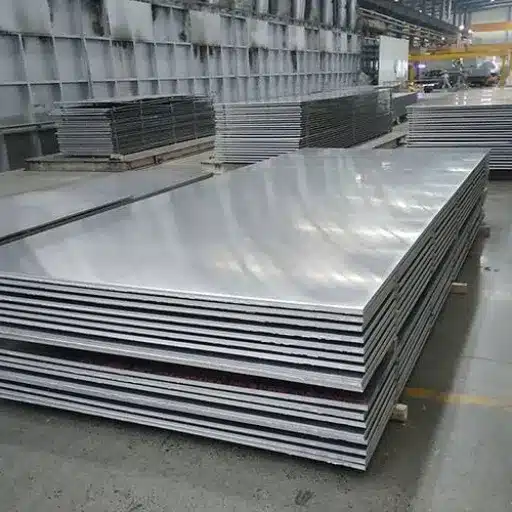
Monel in the Marine Industry
Monel has become a leading material in the marine industry due to its amazing resistance to saltwater corrosion. The long-lastingness of Monel along with its capacity to endure the seawater’s erosive effect makes it suitable for various marine applications. It is frequently used for the production of seawater pumps, valves, propeller shafts, and piping systems. Monel’s strength and corrosion resistance make these applications have a long service life even under highly saline and high-pressure conditions, thus, it lowers maintenance of vessels and offshore structures.
The resistance of Monel to stress corrosion cracking and pitting, the very common problems in the marine environment, is one of the primary reasons why it is most favored in the marine sector. Recent research shows that Monel alloys, such as Monel 400 and Monel K-500, can still keep their mechanical features in seawater at different temperatures, thus offering huge reliability for critical marine parts. Monel K-500, for example, has the advantage of strength from its precipitation-hardening properties, making it an excellent choice for parts under heavy load like propellers and pump shafts.
Monel in Chemical Processing
The unique properties of Monel make it a very important material in the chemical processing business. Monel’s exceptional resistance to acids, alkalis, and corrosion makes it the one capable of enduring tough chemical atmospheres that would destroy other materials. Monel alloys, especially Monel 400, are widely used in the chemical industry for manufacturing storage tanks, valves, and piping systems for moving and containing aggressive substances like hydrofluoric acid, sulfuric acid, and caustic soda.
One very important benefit of Monel is its heat resistance that ranges very high. Thus, it is very suitable for the chemical industries for application in heat exchangers, reactors, and distillation columns. Industrial studies say that Monel 400 does not fail due to stress corrosion cracking in most freshwater and alkaline environments, which adds to its longevity and reliability in critical applications. For example, Monel’s resistance to hydrochloric acid under certain conditions is unmatched when compared with traditional stainless steel alloys.
Advantages and Limitations of Monel Alloy

Advantages of Using Monel Alloy
✓ Unmatched Corrosion Resistance
Monel’s exceptional corrosion resistance is one of the most remarkable features of the metal, especially in conditions with high corrosion levels. Monel’s ability to endure seawater, steam, and the acid environment makes it the perfect choice for the marine and chemicals industries. For instance, Monel 400, one of the most widely used grades, is saltwater resistant and does not undergo chloride-induced stress corrosion cracking. Thus, there is great reduction in maintenance further.
✓ High and Low Temperature Strength
Monel does not lose its strength and mechanical properties even with a tremendous temperature variation. It goes from cryogenic to high-heat environments of about 1000°F (480°C). That is why it can be used in heat exchangers, boilers, and turbine components.
✓ Fabrication Convenience
Monel alloys can be fashioned easily through conventional machining, welding, and metalworking techniques. Manufacturing process flexibility allows the industries to give the material any shape they need, thus it becomes thei9r best option for the production of valves, pumps, and pipes.
Disadvantages and Difficulties
✗ High Price
Monel is much more expensive than stainless steel and other popular materials. The main reason for this price hike is its nickel content, so its use on budget-constrained projects becomes very hard. At present, the cost of Monel 400 is from $9 to $15 per pound depending on the market and the need for production.
✗ Machinability Problems
Monel is a material known for its strength and resistance to corrosion but at the same time it creates problems during machining and fabrication. Its toughness will for sure lead to an increase in the wear of tooling which will directly increase production costs and the corresponding time. Thus, special equipment and skilled labor will be needed which in turn will further restrict its application in some sectors.
✗ Weight and Density
Monel is heavier than most alloys due to its density and this can affect its use in applications where weight is an important factor. For instance, in the aerospace industry, companies prefer titanium or aluminum alloys that are lighter and thus help to reduce the total weight and improve fuel efficiency.
Recent Innovations and Advancements
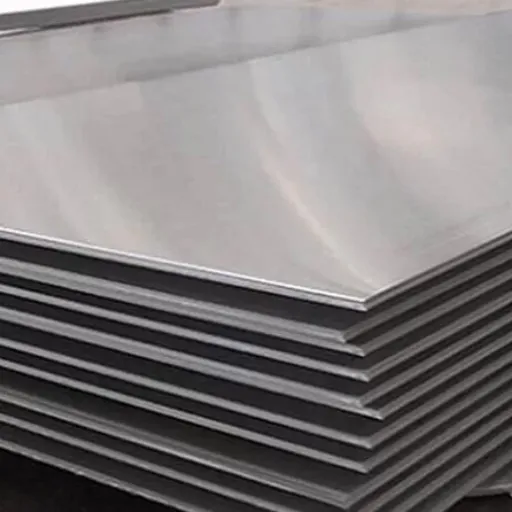
Innovations in Monel Alloy Production
The modern day lies pretty much in the lap of the advances that have reduced the production of Monel alloys to a degree that sustainability, efficiency, and performance are the major attributes. What comes to mind when metallurgical techniques are mentioned is one of the notable ones that have been pioneered; vacuum induction melting (VIM) and precision casting are some of the practices that provide better management of the alloy’s microstructure. This, in turn, leads to the reliable characterization of such properties as corrosion resistance and mechanical strength giving Monel a wider range of applications in the most demanding areas.
Another innovation that has taken place is the addition of recycled nickel and copper to the production process. A recent report indicates some producers now apply as much as 50% of recycled materials without affecting the quality of Monel alloys. It is a common practice that drastically cuts down the carbon footprint of the whole metal extraction and processing activities, consequently leading to a cleaner and more eco-friendly production cycle.
Emerging Trends in Monel Applications
The versatile Monel alloys, which are always compared to the highest number of counterparts based on their remarkable corrosion resistance and toughness, still have a long list of applications on the industrial market. New and innovative ways of using them are constantly arising in different fields of industry. One of the most important directions is the increasing demand for Monel in renewable energy sources throughout the world. Modern Monel’s resistance in extreme conditions makes it perfect for offshore wind farms and tidal energy power plants because corrosion by saltwater is the main consideration in that market segment.
Likewise, the chemical processing market has become one of the lead consumers of Monel due to its use in the production and storage of highly corrosive chemicals such as hydrofluoric acid. This approach has been supported by recent research which shows that Monel alloys can extend the life of critical equipment by as much as 30%, which is a great cost savings through reduced maintenance.
Reference Sources
-
ChemAnalyst
- Title: Monel Market Size, Share, Growth, Analysis and Forecast
- Description: This source discusses the market expansion of Monel materials, highlighting its applications and key stakeholders, including manufacturers and industries.
- Link: ChemAnalyst Monel Market Report
-
Domadia.net
- Title: Monel Price: Key Market Trends & Cost Factors Explained
- Description: This article explores the widespread use of Monel in industries like shipbuilding, chemical processing, oil and gas, and electrical components, emphasizing its durability and resistance.
- Link: Domadia Monel Price Trends
-
Verified Market Reports
- Title: Monel Alloy Market Size, Consumer Insights, Trends & Analysis
- Description: This report provides insights into the extensive use of Monel alloys in oil and gas, chemical processing, maritime, and aerospace industries, focusing on its remarkable properties.
- Link: Verified Market Reports Monel Alloy Market
Frequently Asked Questions (FAQs)
What is Monel Material and Its Chemical Composition?
Monel is not one material but a consortium of nickel-copper alloys primarily and mostly made up of nickel (63%) and copper (28% approximately). Apart from these two main components, a very small quantity of iron, manganese, carbon, and silicon is present. Alloy 400, the most common type, has a very high resistance to corrosion as well as to temperatures so it can be used in the marine and chemical processing industry among others.
How Does the Machinability of Monel Compare to Stainless Steels?
Monel definitely allows a good degree of machining; nevertheless, it is almost always tougher to work with than stainless steels such as 316-grade. In fact, particular attention and specific tools are often needed to achieve the required quality of finish and precision with Monel especially because of its hardness and toughness.
What Are the Physical Properties of Monel Metal?
The list of physical properties associated with Monel metal includes the most important ones like very high melting point, excellent solubility in oxidizing media, and a density which is about the same as that of copper and nickel. Moreover, it being ductile and capable of resisting extreme conditions including acid and alkali exposure has also earned it a good reputation.
What Types of Monel Are Available for Industrial Use?
There are many grades of Monel that can be obtained such as Monel 400, Monel R-405, and Monel 404. Each of them has its own peculiar features and uses, with Monel 400 still being the most applied one due to its great applicability and resistance to corrosion in different environments.
Conclusion
Monel alloys, particularly Monel 400, continue to be indispensable materials across multiple industries due to their exceptional corrosion resistance, temperature tolerance, and mechanical strength. While the higher cost and machining challenges present considerations, the long-term benefits in terms of durability, reduced maintenance, and performance in extreme environments make Monel an excellent investment for critical applications. As innovations in production methods continue to emerge and new applications in renewable energy and advanced manufacturing develop, Monel’s significance in modern engineering will only continue to grow.


